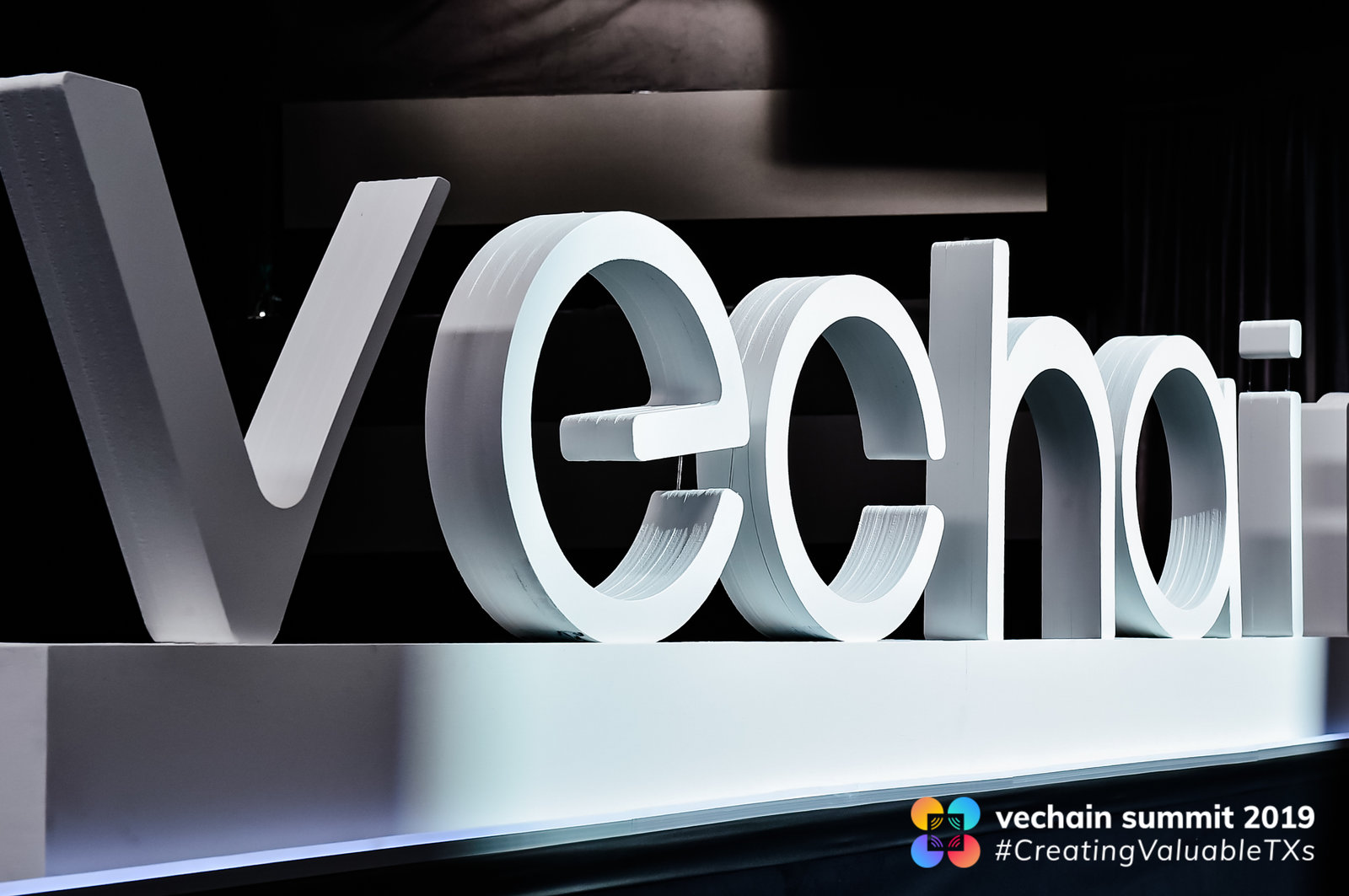
With the Technical Deep Dive series finished, the Vechain team held an Ask-me-Anything on Youtube. During the AMA, we, the community, could ask the team any questions we had regarding Vechain’s technology.
The AmA was held on the 11th of January by Sunny Lu (CEO), Kevin Feng (COO) and Gu Jianliang (CTO). You can rewatch the hour-long (!!) video here:
Sunny starts the ama with a recap of 2018. The biggest event in 2018 was, of course, the launch of the VechainThor blockchain after working on it for 11 months. The team also worked hard on forming new partnerships and has been working together with current partners to move them to the VechainThor blockchain.
Sunny also mentions how DNV GL, on the 10th of January, officially launched their My Story Service and how we can already see the impact of it on the amount of main net transactions.
Click here to learn more about the official release of My Story.
With Bitcoin just celebrating its 10th birthday, blockchain technology is still very young. Sunny expects that in the next decade, blockchain technology will change the world, with the technology going mainstream and actually impacting the daily lives of people. Kevin adds that blockchain adoption will be driven by business models using blockchain technology to support the real economy.
Vechain’s goal for 2019 will be to bring more valuable transactions to the VechainThor blockchain. It is not just about the number of transactions, but more importantly about how those transactions can actually offer value and benefits to the users of the blockchain. Only then, blockchain tech can become sustainable.
Vechain will hold a conference for developers (DevCon) in April somewhere in the San Francisco Bay Area, USA.
Sunny then talks about how a lot of companies are still trying to figure out legislation and regulation when they want to implement blockchain technology. This will be a key barrier to take in the upcoming year(s) for enterprises to (more openly) turn towards blockchain technology. This is something the whole crypto world has to work on together and not something Vechain can do on its own.
Vechain’s goal for 2019
To summarize, 2019 for Vechain will be about:
- More valuable blockchain transactions
- Continue to improve the blockchain core and surrounding services.
- Launch more enterprise applications
- Provide the community with the tools and information needed to start developing their own dApps on the VechainThor platform.
- Work on legislation and regulation
New tools for developers
Kevin takes over from Sunny to give us more details on what they have in store for developers. Sync, a complete environment to build dApps in, will be released next week.
Vechain will also release a standard protocol for dApps to interact with users called Connex. Connex will be similar to what web3 is to Ethereum. Vechain will also continue to support web3 applications, so developers can choose between Connex or web3 themselves. Comet, the browser-based wallet build by Totient, will also support Connex soon.
Morpheus labs, another Vechain partner, is also working on providing developers with a development environment.
When these tools are released, Vechain will launch a campaign to encourage developers to start building on the VechainThor platform, offering a reward to valuable dApps. One of the bounties will be for the further development of a side chain running the Swift programming language.
To improve how developers build applications, the Tech team is currently working hard to make the VechainThor platform more modular. So developers can focus on certain parts of their application, without having to worry about how this will impact other sections of their application.
Update on VeResearch
Sunny confirms that Vechain has been working together with MIT labs. MIT Media Lab is a research laboratory at the Massachusetts Institute of Technology.
Dartmouth College has also joined the VeResearch program. Dartmouth will help Vechain by doing research on how to create a secure voting platform for Vechain.
Vechain has also partnered with Stanford University to work solutions that allow for privacy on the VechainThor platform. So users can, for example, send transactions anonymously.
Questions from the community
Q1: will Vechain release the identities of the Authority Node holders?
Sunny starts by mentioning that they have been asked this question many times and he understands that people keep raising this question.
It’s hard for current Authority Node holders to disclose their status, not only because of business confidentially and security concerns but more importantly because of legislation.
Vechain is working hard to push this legislation. For example, they have been working with Cyprus to create new legislation, so enterprises can set up an entity over there that allows them to work with crypto more easily.
Kevin adds by mentioning that DNV GL only recently announced that they would become an Authority node. It took over half a year for them to decide if they should run one. This time was needed to get their internal departments (legal, compliance) aligned.
Vechain now wants to leverage on the experience they gained with DNV GL to help and push other enterprises to come forward as an Authority Node holder.
Q2: Is there an update on the cross/sidechain development progress?
The sidechain solution is already up and running since November. But there still is a lot of work to be done. Gu invites developers to work with the Vechain team if they have a good use case that would benefit from this technology.
Q3: What is the progress of VeVID, VeVOT, VeSCC?
Work on these modules is driven by the needs of use cases. Prototypes for these modules are already finished and up and running. But the team doesn’t want to rush these and finalize these modules, they want to remain flexible for now so use cases can be implemented more easily.
You can already sign up for a VeVID on the Vechain portal.
Q4: how long will it take to onboard enterprises onto the main net?
There currently are around 20 enterprise projects running on the main net, like for example DNV GL, BYD, and MadeforGoods. People in the crypto world expect enterprise onboarding to happen at crypto speed, but unfortunately, that is not how the real world works. Onboarding traditional enterprises take a long time.
Sunny gives the Arket beanie’s as an example. It took over 14 months from the first talks with Arket to having the first pilot products in the store.
Kevin also mentions that there has been a lot of progress in their work with BMW, and they have finished the first two phases successfully and are entering phase 3. Unfortunately, at this time, they can’t give us more details on this.
Q5: What is the process that scales from 50 tps to 10,000 tps?
The amount of transactions per second (TPS) the network is currently able to handle is not a limiting factor. Because of dynamic block sizes, theoretically there is no limit on scaling the throughput of the blockchain, however, in practice, there is a limit because of hardware and IT infrastructure.
Q6: Why are some transactions getting reverted on the blockchain?
This is because contracts run out of gas. This can happen on accident but is also used intentionally when the team is testing smart contracts.
Q7: How or when will we be able to utilize In-transaction Proof Of Work (In-tx PoW)
The technology for this is already live, it is up to developers to implement this.
Q8: What is the best resource for a developer to learn how to develop dApps on the VechainThor blockchain?
A global support team of 3 or 4 people per region (Asia, Europe, and the USA) will be set up. The will offer local support to developers wanting to build on the VechainThor platform.
Next to this, the team will launch an Innovation Lab, in which developers can find documentation and examples codes.
Q9: Do you still follow the idea of smart contracts support for the Rust programming language?
VechainThor currently only supports Solidity, but the team is working together with external parties to add support for additional programming languages like Rust.
Q10: How does cross/side chain technology integrate with the main chain?
A side chain is different from a public chain, it really depends on the use case how it will function in terms of costs.
But if you want to send data from the side chain to the main chain, you will have to pay for this transaction using VTHO. At a minimum, all side-chains use VTHO when requesting resources from the main chain. The team says they are also thinking about a solution where entities that want to run a side chain, have to stake a certain amount of VET into a smart contract on the main chain.
The Vechain team will only work on solutions that will provide value to the public blockchain.
Thanks for participating in the livestream. We are committed to building business applications and bringing the value to the public VeChainThor blockchain only. Solutions like MyStory will set the example for the world. https://t.co/FHxyJVu6cC
— Kevin Feng (@kfeng027) January 11, 2019
Q11: What is the status of BYD project?
BYD joined Vechain as a partner a long time ago, BYD will release two new types of cars which will feature the VechainThor software.
Q12: Will a small business demo kit become available?
Yes, this will be available for DevCon. We will provide turnkey solutions that are ready to go and other solutions that need some blockchain development to customize them.













